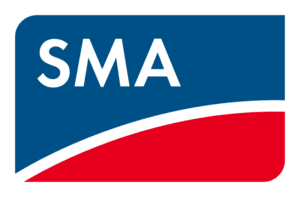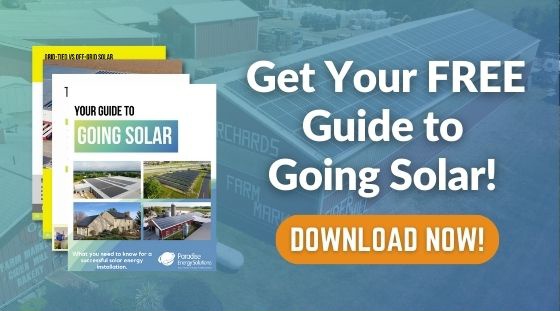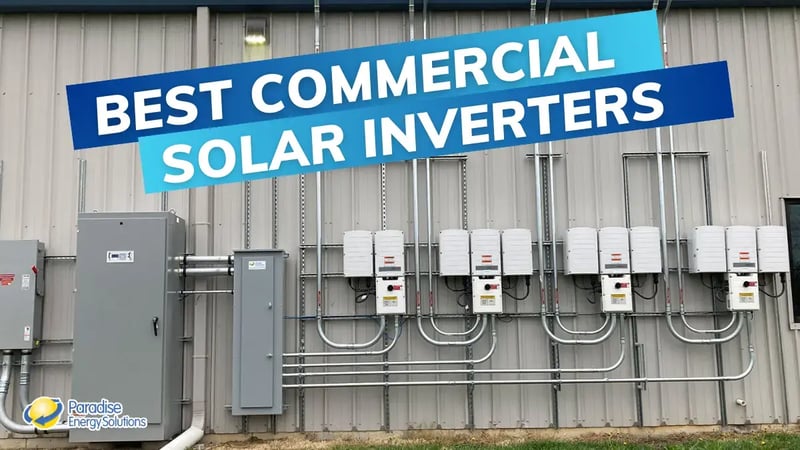
Table of Contents
-
Jump to a section
- The Best Type of Inverter
- The Best Brands
- How to Pick The Best Inverters
When designing a commercial solar system, most businesses focus on solar panels. But you can’t afford to overlook another essential piece of equipment: the inverter.
Inverters convert the DC electricity produced by your solar panels into the AC electricity your business actually uses. Since inverters are often the first component to need replacement, choosing the right one is crucial for maximizing your system’s performance, reliability, and return on investment.
What Are the Types of Commercial Solar Inverters?
There are three main types of commercial solar inverters available for your system:
- String inverters
- Microinverters
- String inverters with power optimizers
Each has its advantages, and the best choice depends on your business’s goals, site conditions, and budget.
String Inverters
String inverters are the workhorses of most ground-mounted commercial solar systems. They’re cost-effective, simple, and reliable.
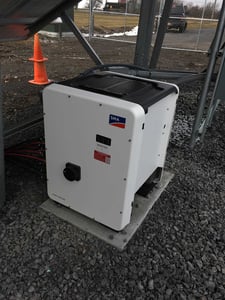 The size of your solar array will dictate how many inverters you’ll need, ranging from one to a dozen or more. They’ll typically be mounted along a wall in a protected area from the weather.
The size of your solar array will dictate how many inverters you’ll need, ranging from one to a dozen or more. They’ll typically be mounted along a wall in a protected area from the weather.
One string inverter converts energy for several solar panels. When one panel’s production is reduced, whether from shade, damage, or something else, it’ll impact the production of all other panels in that string.
Still, string inverters are often the most economical solution for large commercial systems and deliver solid performance with lower upfront costs.
Microinverters
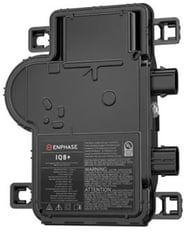 Microinverters attach to the underside of each solar panel in your system. Compared to string inverters, they require more equipment and take longer to install, leading to higher costs. Microinverters can also be more challenging to maintain as they’re spread across the panels and may require roof access.
Microinverters attach to the underside of each solar panel in your system. Compared to string inverters, they require more equipment and take longer to install, leading to higher costs. Microinverters can also be more challenging to maintain as they’re spread across the panels and may require roof access.
The main benefit is module-level optimization. Each panel produces as much energy as possible, unlike string inverters, where the least-producing panel sets the production for all others in the string.
That said, Installation is more complex and expensive, maintenance is harder (since they’re on the roof), and costs don’t always justify the benefits at scale.
String Inverters with Power Optimizers
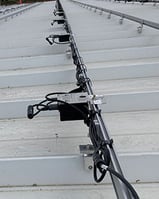 This hybrid solution uses string inverters paired with power optimizers on each solar panel. It delivers many of the same benefits as microinverters—like improved production in shaded or uneven light conditions—at a lower cost.
This hybrid solution uses string inverters paired with power optimizers on each solar panel. It delivers many of the same benefits as microinverters—like improved production in shaded or uneven light conditions—at a lower cost.
Power optimizers also help meet rapid shutdown requirements on rooftops and are ideal for rooftops with shading or variable tilt or where squeezing out every bit of production is critical.

The Best Commercial Solar Inverters of 2025
Now that we’ve covered the types, let’s examine the best commercial solar inverters for 2025. These are the brands we trust at Paradise Energy based on performance, warranty, financial strength, customer support, and our overall experience after completing hundreds of commercial installations.
- SolarEdge
- SMA
- Chint Power Systems (CPS)
- Growatt
- Solectria
SolarEdge
Use Case: Rooftop systems, especially complex or shaded roofs.
Why It’s Great: SolarEdge’s inverter-plus-optimizer design delivers strong performance and module-level monitoring. It's ideal when maximizing production is a top priority.
Features and Things to Note:
- Excellent monitoring at the module level
- Integrated DC battery, EV charger, and load control
- Rapid shutdown compliant
- U.S.-manufactured components available for domestic content incentives
Efficiency: 97–98%
Warranty: Inverters up to 25 years, optimizers 25 years
Cost: Premium, but justified by performance and features
Considerations: There have been reliability issues in the past, though improvements have been made.
SMA
Use Case: Three-phase ground mounts
Why It’s Great: Long-standing track record, reliable, and economical. SMA doesn’t offer module-level optimization, but their ShadeFix technology helps mitigate some shading losses.
Features and Things to Note:
- Great monitoring portal
- Optional battery integration on single-phase
- European-made (no domestic content currently)
Efficiency: 97.5–98%
Warranty: Standard 10 years, extendable to 20–25 years
Cost: Lower than SolarEdge or Enphase
Chint Power Systems (CPS)
Use Case: Mid-sized three-phase ground mounts (50kW to 1MW+)
Why It’s Great: CPS delivers value and reliability for mid- to large-scale commercial ground-mount systems. Economical and simple, with performance you can count on.
Features and Things to Note:
- Good monitoring
- Solar-only focus (no battery integration in common models)
- Manufactured in Thailand (no domestic content)
Efficiency: 97.5–98%
Warranty: Standard 10 years, extendable to 20
Cost: Among the most cost-effective three-phase string inverters

Growatt
Use Case: Single-phase ground mounts
Why It’s Great: Growatt inverters are ideal for businesses with smaller systems. Offers larger inverter sizes than some competitors, such as an 11.4kW unit, which is a great fit for single-phase designs.
Features and Things to Note:
- Reliable monitoring
- Optional but limited battery support
- Manufactured in China and Vietnam (no domestic content)
Efficiency: 97.5–98%
Warranty: Standard 10 years, extendable to 20
Cost: Most economical for smaller commercial projects

Solectria
Use Case: Large-scale three-phase ground mounts (1MW+)
Why It’s Great: Built for utility-scale solar, Solectria's high-voltage inverters offer reliable performance at a low cost. While their built-in monitoring is lacking, third-party platforms make up for it.
Features and Things to Note:
- Optional remote access with full control
- Terrible native monitoring, but workaround available
- U.S. manufactured for domestic content compliance
Efficiency: 97.5–98%
Warranty: Standard 5 years, extendable to 10 (typical for this class)
Cost: Low, even with added third-party monitoring
What to Look for in a Commercial Solar Inverter
Before you choose your inverter, consider these key factors:
- Monitoring: Remote diagnostics, module-level data, and system performance tracking
- Financial Strength: Choose brands with stable histories and responsive support
- Support: Installer training, warranty responsiveness, and help troubleshooting
- Warranty: 10 years minimum, extendable to 20–25 years preferred
- Efficiency: CEC ratings of at least 97% (most inverters here exceed that)
- Compliance: Rapid shutdown, utility approvals, and domestic content (if needed)
- Mounting: Roof, pad, or wall options based on your facility’s layout
- Scalability & Features: Battery storage, EV chargers, or load control (if desired)
Make the Right Commercial Solar Investment
Picking the right inverter is key to the long-term success of your commercial solar system. It’s not just about saving money now—it’s about setting your system up for reliable, efficient operation over decades.
Need help navigating your options? Our team of experts is here to help. Schedule a free consultation, and we’ll help you design a system with the best equipment for your goals.
Not quite ready? Use our commercial solar ROI calculator or download our solar buying guide to explore how solar can reduce your business expenses and boost long-term profitability.


